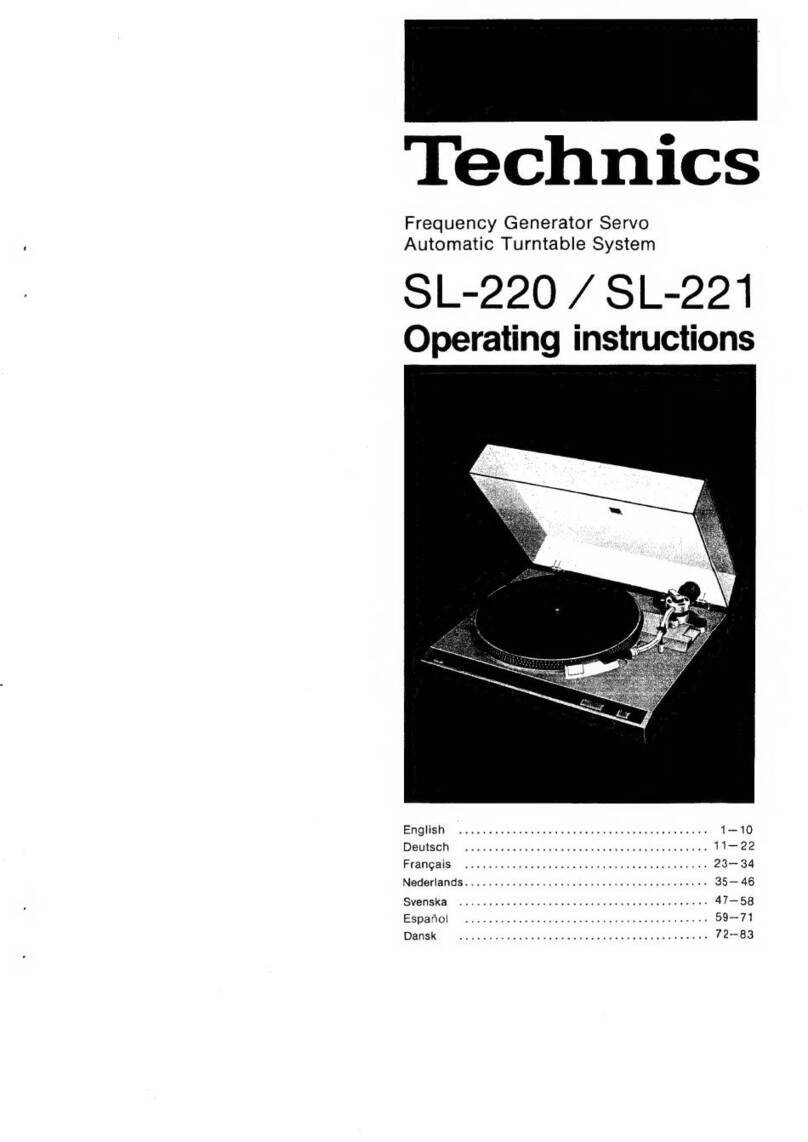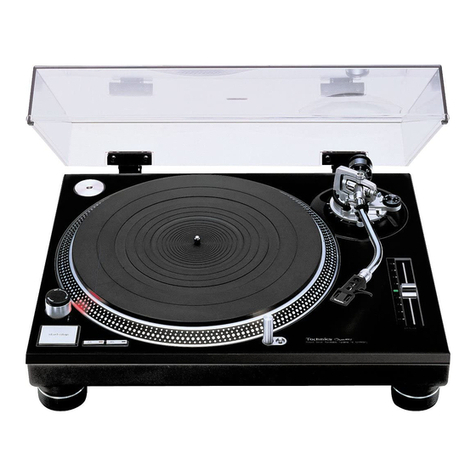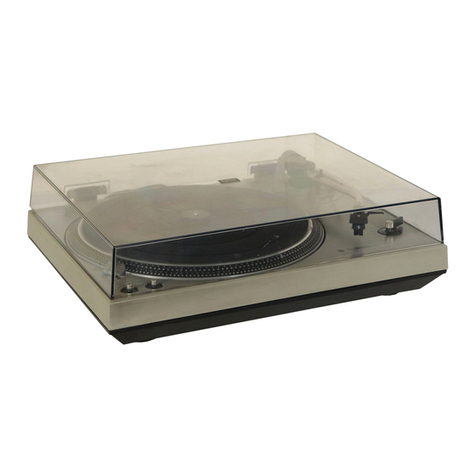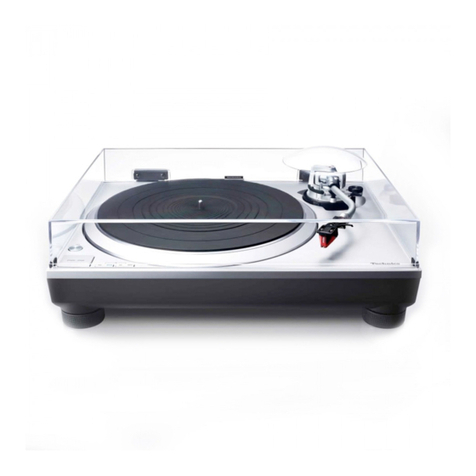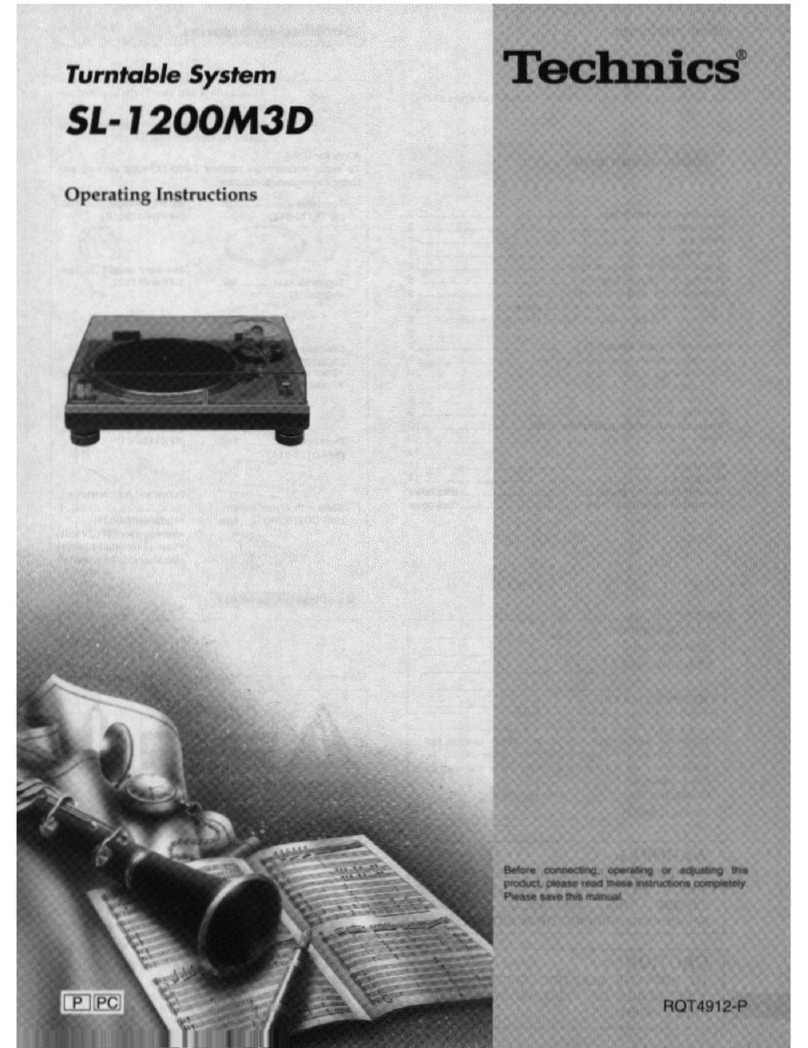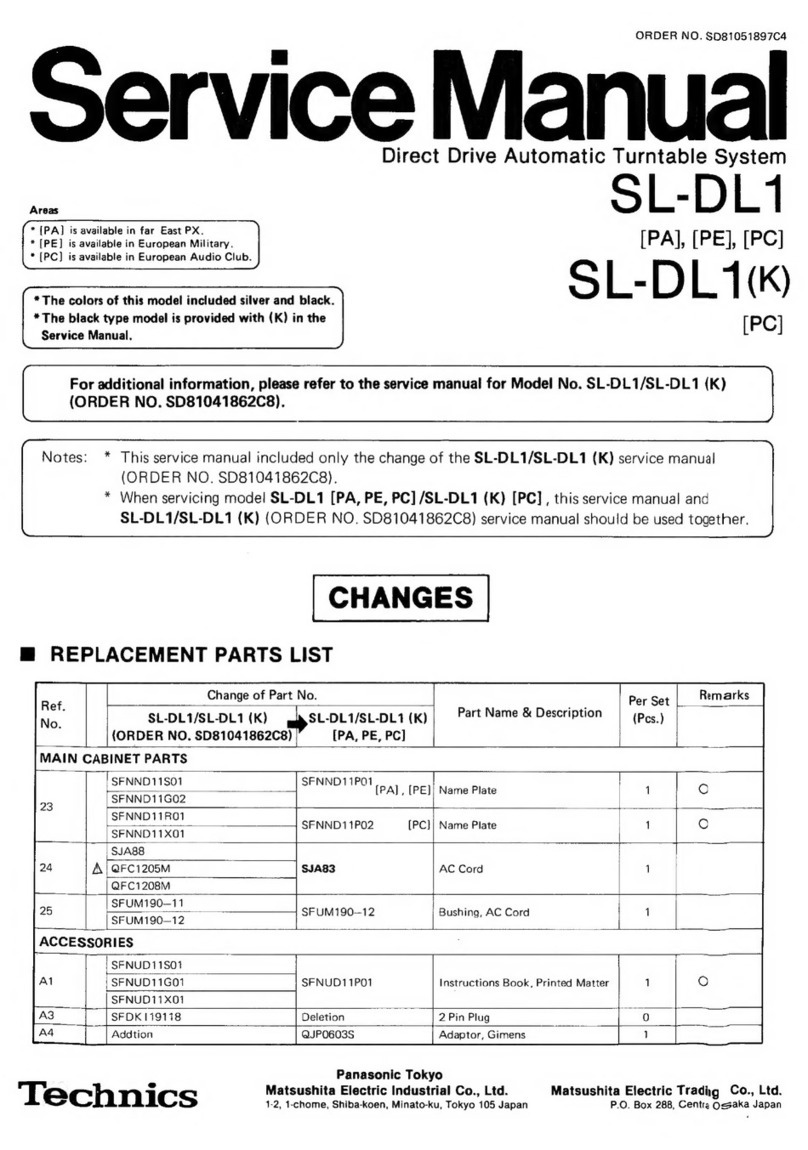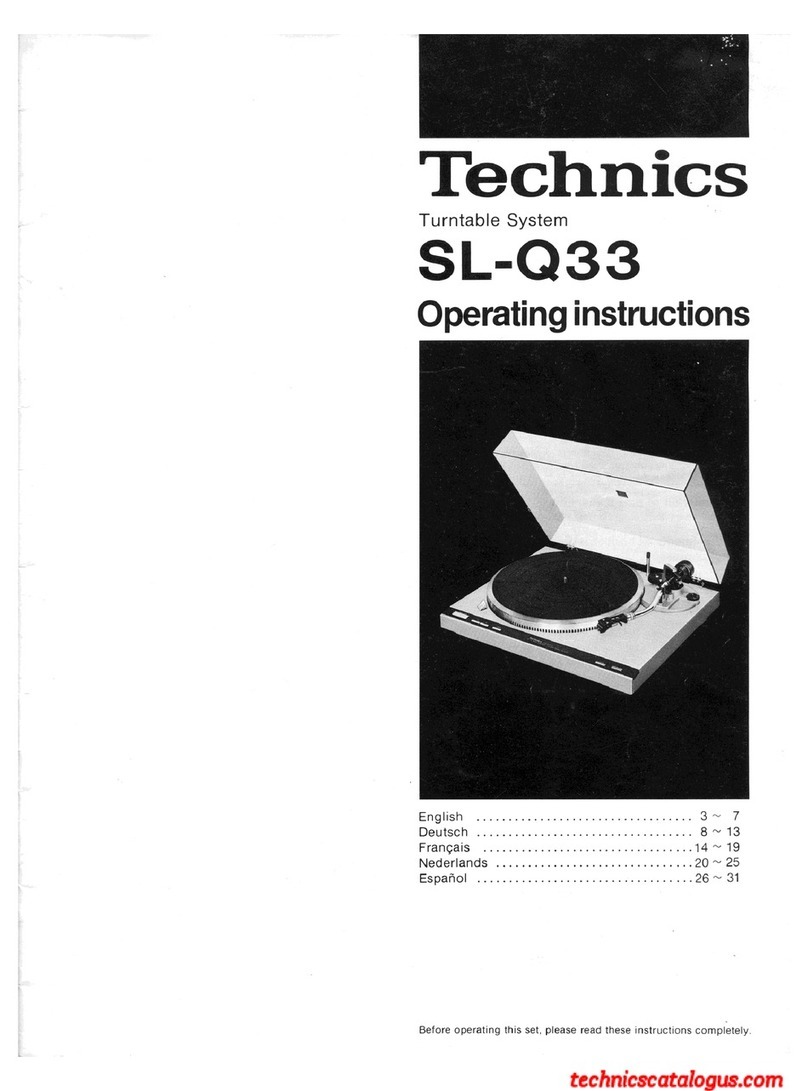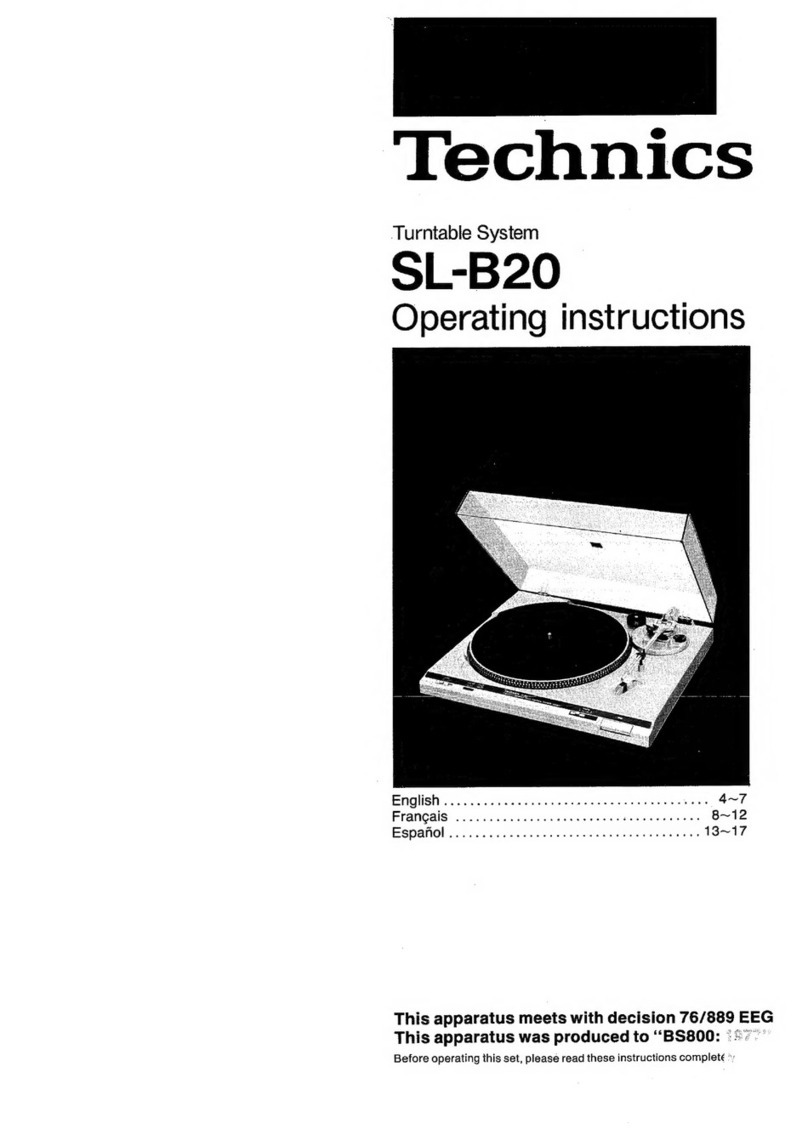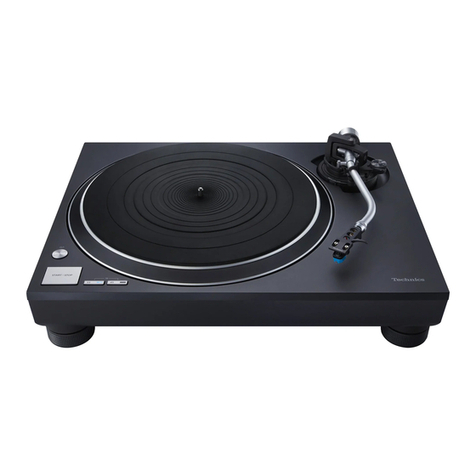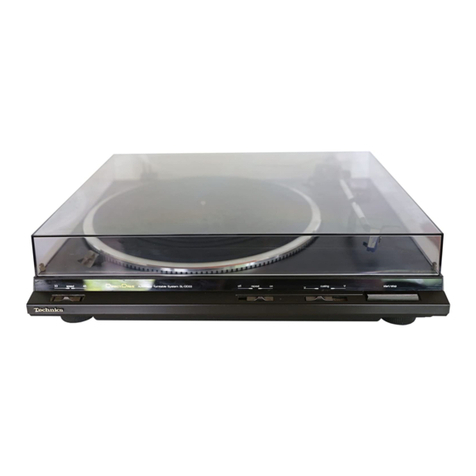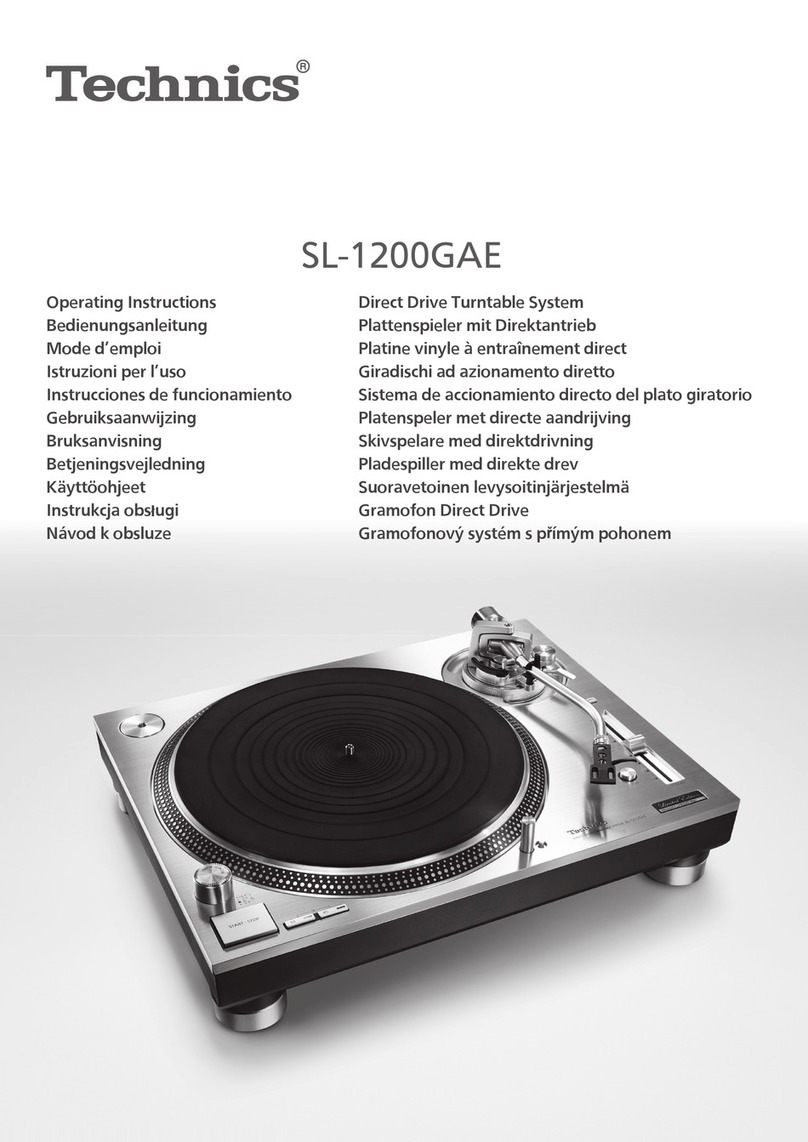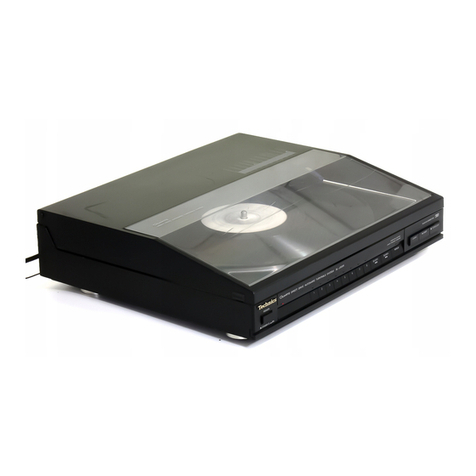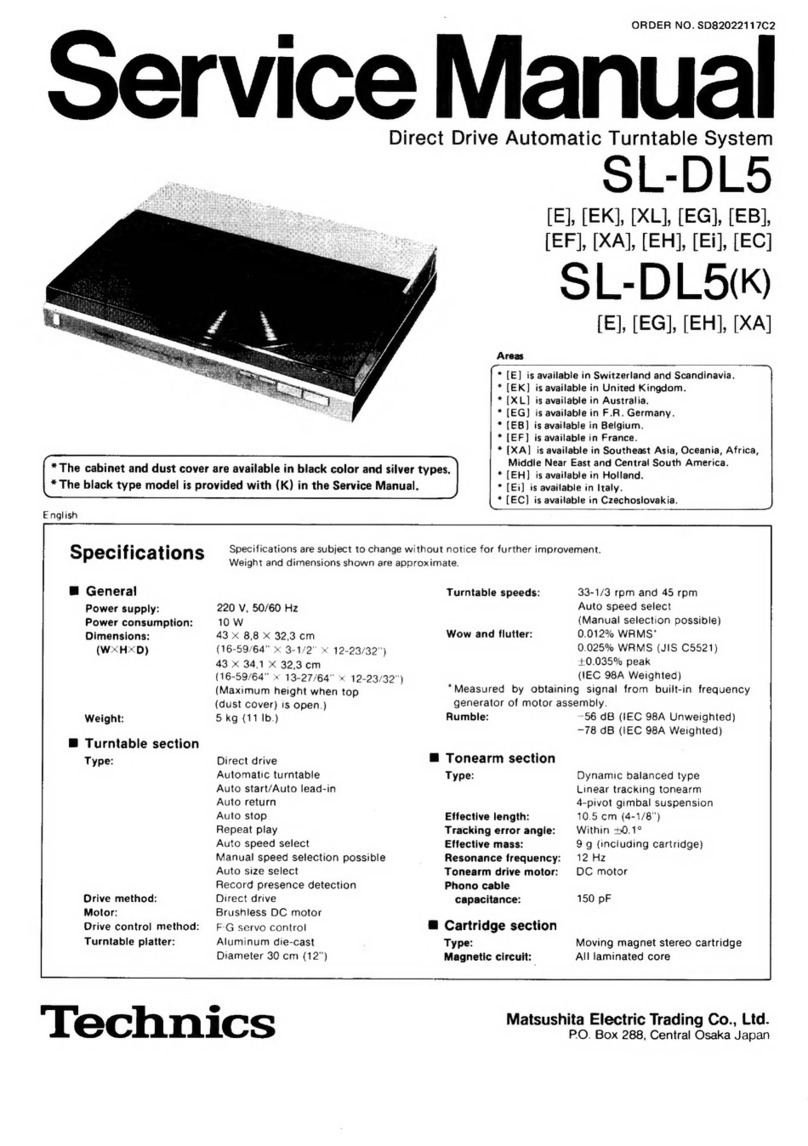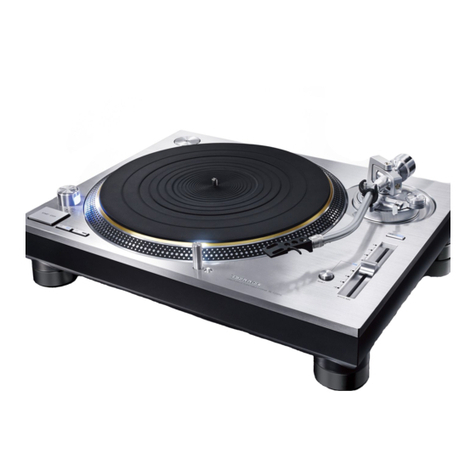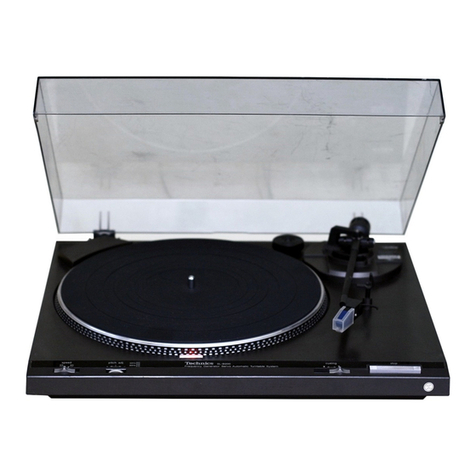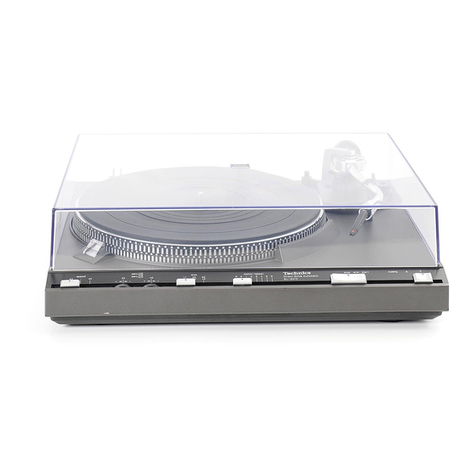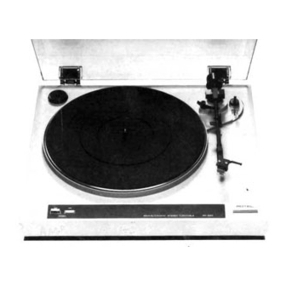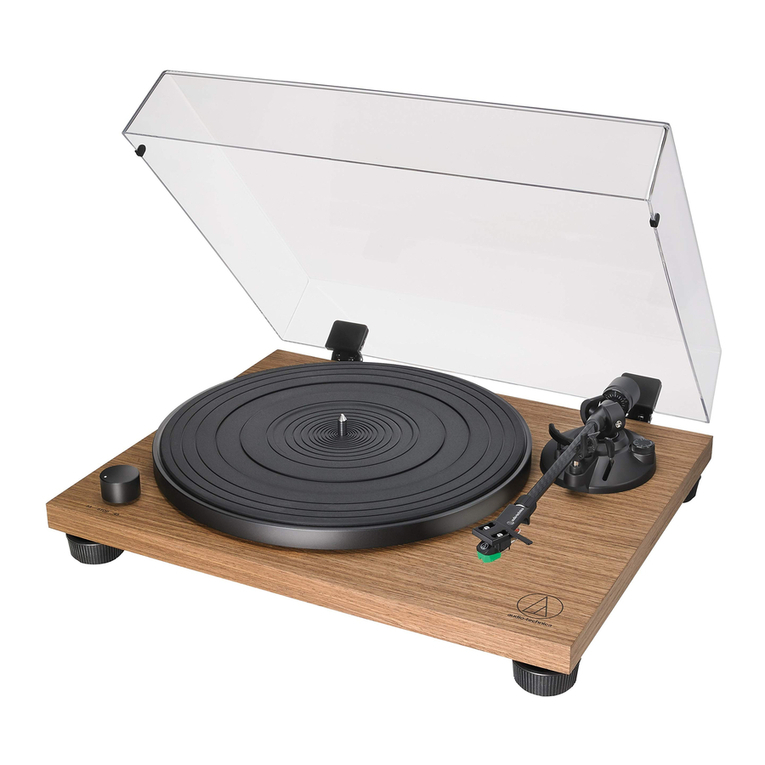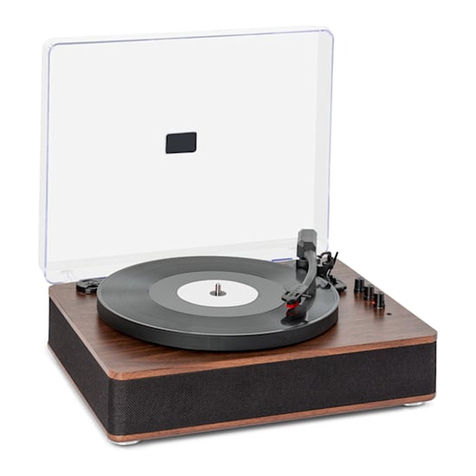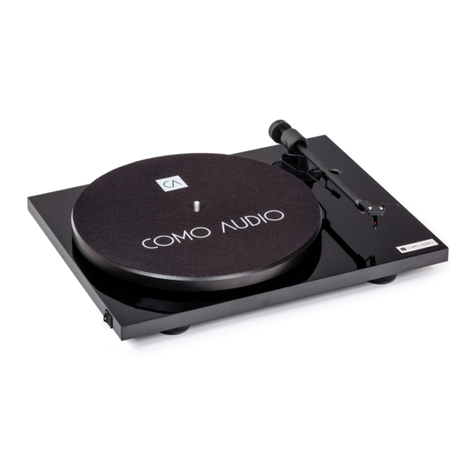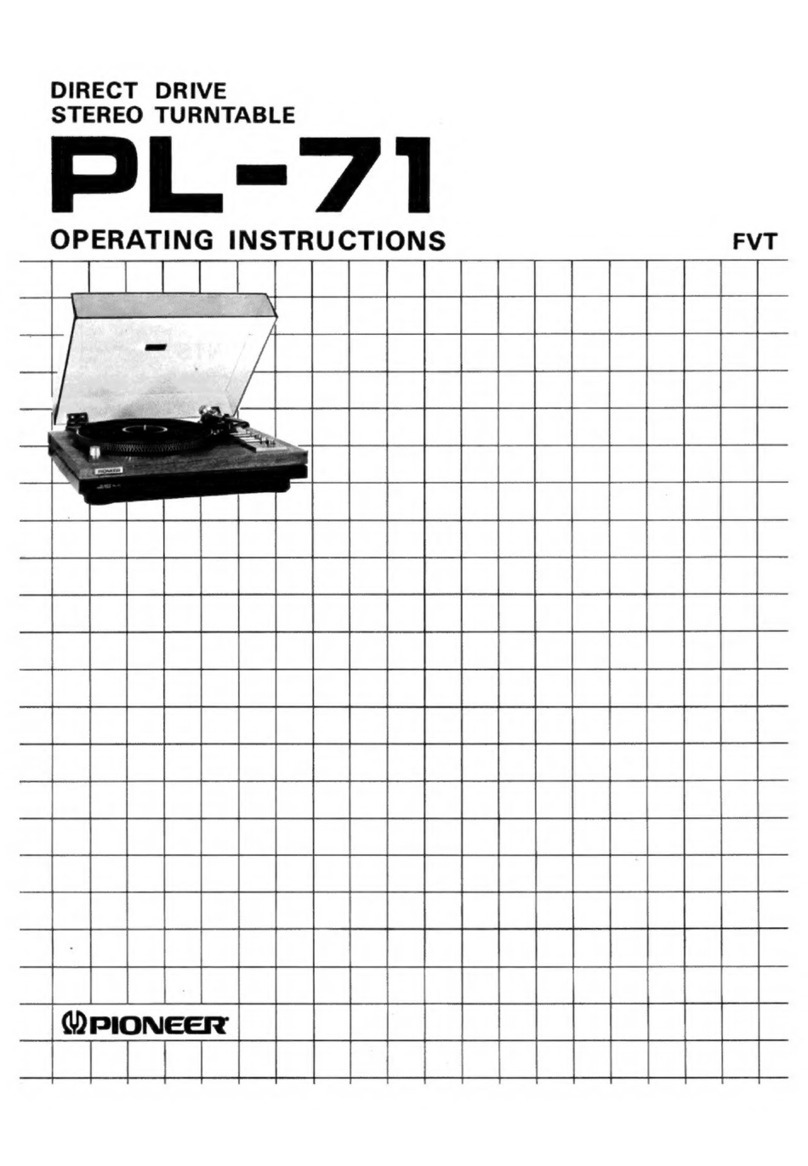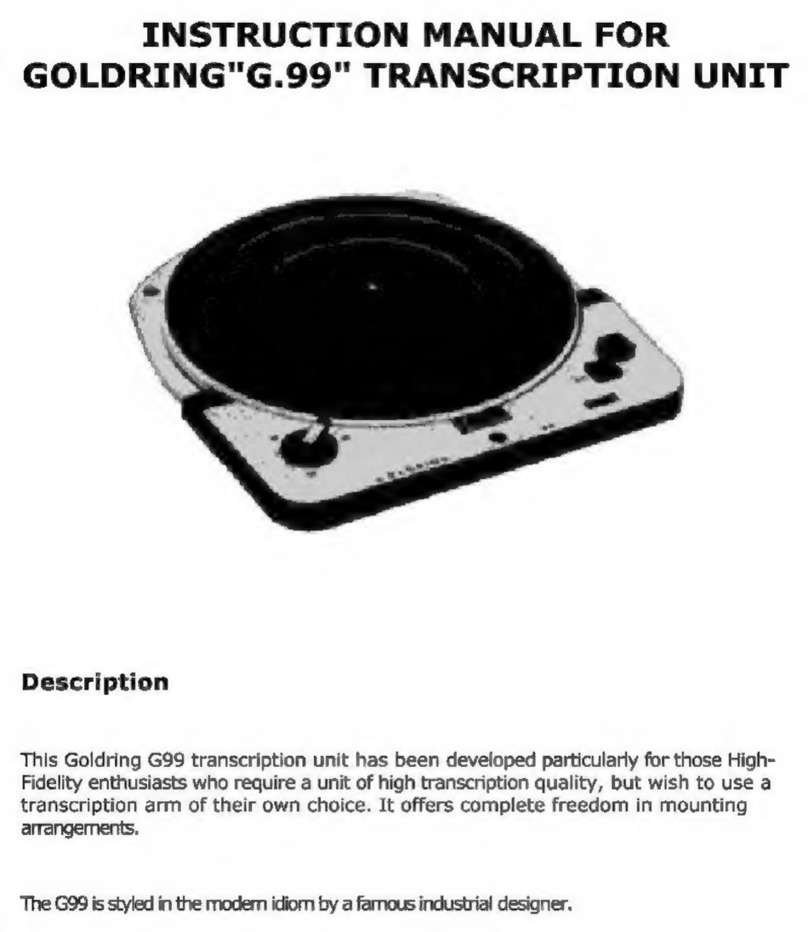
m=
HOW
TO
OPERATE
Manual
play
of
record
1.
Place
a
record
on
the
turntable
mat.
2.
Set
the
speed
select
knob
to
the
desired
record
speed.
(See
Fig.
2)
Speed
selectakin
Fig.
2
3.
Remove
the
stylus
protector,
if
your
cartridge
has
a
detachable
one.
4.
Release
the
arm
clamp.
.
Set
the
cueing
knob
to
the
“’¥”’
position.
(See
Fig.
3)
6.
Move
the
tonearm
over
the
record
and
set
the
cueing
knob
to
the
“W"
position.
(See
Fig.
4)
The
tonearm
will
descend
slowly
onto.
the
record
and
play
will
begin.
When
the
tonearm
is
moved
toward
the
record,
the
power
is
turned
on
and.
the
turntable
platter
will
start
rotating.
a
or
cueing.
yee
=ig.
3
Fig.
4
7.
When
play
is
finished,
the
tonearm
will
automatically
return
to
the
arm
rest
(auto-return),
and
the
turntable
platter
will
stop
rotation.
The
turntable
platter
will
con-
tinue
to
rotate
brietly
due
to
its
own
Inertia,
If
the
unit
is
not
to
be
used
for
some
time,
set
the
speed
select
knob
to
the
neutral
“e”
position.
Attach
the
stylus
protector
again,
if
you
have
one,
to
guard
the
stylus
tip
from
damage.
When
you
play
a
45-rpm
record
with
a
large
center
hole
Place
the
45-rom
adaptor
on
the
center
spindle.
Set-the
speed
select
knob
to
the
“45”
position.
How
to
stop
play
Set
the
start/stop
knob
to
the
‘’stop”
position.
(See
Fig.
5)
The
tonearm
automatically
returns
to
the
arm
rest,
and
the
turntable
stops
rotating.
Of
course,
the
unit
will
automatically
shut
off
even
when
the
tonearm
is
manually
returned
to
its
arm
rest
directly.
Note:
Before
you
operate
the
start/stop
knob,
make
sure
that
the
“‘memo-repeat
knob
is
set
at
the
‘‘0”
position
if
this
knob
is
set
at
any
position.
other
than
“0”,
the
repeat
play
is
continued
by
the
number
of
times
indicated,
even
if
you
set
the
start/stop
knob
to
the
“‘stop”’
position.
How
to
suspend
play
Set
the
cueing
knob
to
the
’¥.”
position.
The
stylus
tip
of
the
cartridge
will
be
lifted
from
the
record.
If
the
unit
is
not
to
be
used
for
some
time
Secure
the
tonearm
with
the
arm
clamp.
Attach
the
stylus
protector,
if
your
cartridge
has
one,
to
guard
the
stylus
from
damage.
Close
the
dust-cover.
About
on/off
of
the
stylus
illuminator
(See
Fig.
6)
The
unit
is
equipped
with
a
stylus
ifluminator
for
lighting
the
stylus
tip
during
performance
as
well
as
a
strobe
illuminator
(LED).
When
the
switch
for
the
stylus
illuminator
is
set
to
the
‘‘e”’
position,
the
stylus
illuminator
and
strobe
illuminator
are
lit
upon
rotation
of
the
turntable.
If
the
stylus
illuminator
is
not
required,
turn
the
stylus
iNuminator
switch
to
the
‘‘o”’
position.
Then,
the
lamp
for
stylus
tip
illumination
goes
out
and
only
the
LED.for,the.strobe.iJluminator.is
lt.
tor
Fig.
6

